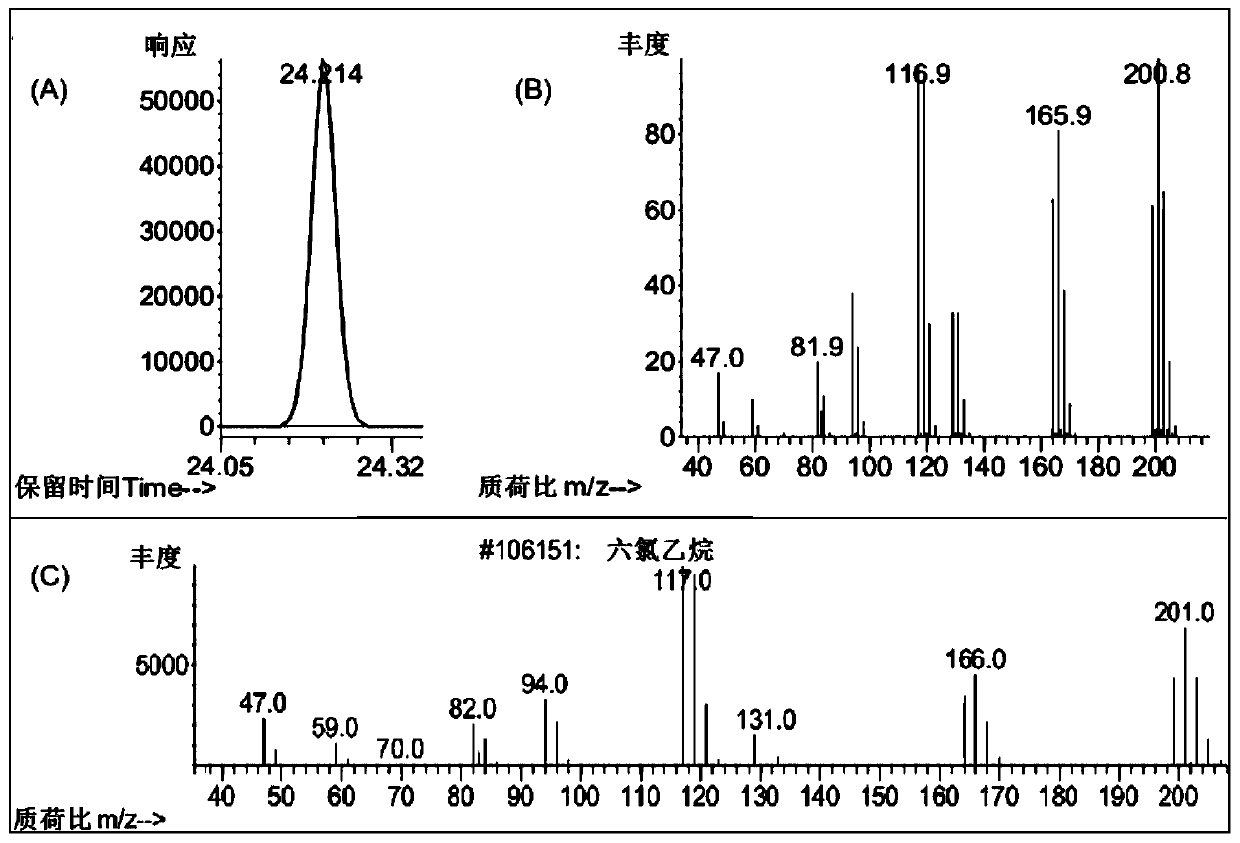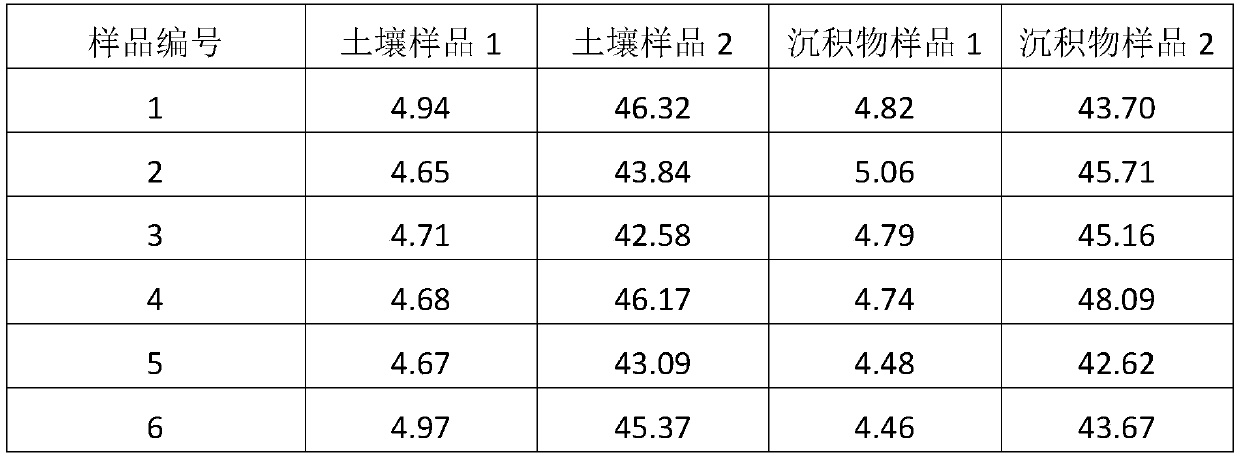Method for analyzing hexachloroethane in soil or sediment by purge-and-trap gas chromatography- mass spectrometry
A purging and trapping and hexachloroethane technology, which is applied in analysis materials, material separation, measuring devices, etc., can solve the problems of poor precision and accuracy of measurement results, high detection limit of hexachloroethane, and complicated operation steps. and other problems, to achieve the effect of high accuracy, simple, efficient and accurate analysis, and simple and fast pre-processing
- Summary
- Abstract
- Description
- Claims
- Application Information
AI Technical Summary
Problems solved by technology
Method used
Image
Examples
Embodiment 1
[0029] When determining the detection limit of the target compound in soil and sediment, quartz sand is usually used instead. Therefore, prepare 7 sampling bottles, weigh 5g of quartz sand respectively, put them into a rotor, add 5mL blank reagent water, 0.025μg six Chloroethane standard substance and 5 μL internal standard / surrogate mixed standard, analyze the content of hexachloroethane in the quartz sand sample according to the optimal conditions, calculate the standard deviation, method detection limit and other parameters, as shown in Table 1.
[0030] Table 1: Detection limit of hexachloroethane (μg / kg)
[0031] Sample serial number 1 2 3 4 5 6 7 standard deviation Method detection limit Hexachloroethane 4.33 4.18 4.07 3.82 4.83 4.10 4.03 0.32 1.0
[0032] The detection limit refers to the lowest concentration or minimum amount of the substance to be detected that can be qualitatively detected from the sample within a given confiden...
Embodiment 2
[0034] Two self-made soil samples and two self-made sediment samples were selected, and the content of hexachloroethane in the above samples was analyzed according to the optimal conditions, and the average value, standard deviation, relative standard deviation and other parameters were calculated respectively, as shown in Table 2.
[0035] Table 2: Determination of HCH in self-made soil samples and self-made sediment samples (μg / kg)
[0036]
[0037]
[0038] It can be seen from Table 2 that the relative standard deviation (ie precision) reflects the degree of agreement between the measured values obtained by repeated analysis of the same sample. Adopt purge-and-trap-gas chromatography to analyze the hexachloroethane in the sample, and the relative standard deviation (being precision) of 7 times of measurement results is in the scope of 2.8-4.8%, illustrates that this method is more stable, and hexachloroethane is measured The reproducibility of the results is high. ...
Embodiment 3
[0040] Select two kinds of self-made soil samples and two kinds of self-made sediment samples, respectively add a certain amount of hexachloroethane, analyze the content of hexachloroethane in the samples according to the optimal conditions, and calculate the recovery rates of the above-mentioned samples respectively, as shown in Table 3 .
[0041] Table 3: Determination of HCH in self-made soil samples and self-made sediment samples (μg / kg)
[0042] Sample serial number Soil sample 1 Soil sample 2 Sediment Sample 1 Sediment Sample 2 1 9.55 25.21 9.58 25.56 2 9.38 23.16 9.48 23.06 average value 9.47 24.19 9.53 24.31 Content before adding standard (μg / kg) 4.78 4.78 4.76 4.76 Determination of spiked amount (μg / kg) 4.69 19.41 4.77 19.55 Theoretical scalaring amount (μg / kg) 5.00 20.00 5.00 20.00 Standard recovery (%) 93.8 97.1 95.4 97.8
[0043] It can be seen from Table 3 that the recovery rate of ...
PUM
 Login to View More
Login to View More Abstract
Description
Claims
Application Information
 Login to View More
Login to View More - R&D
- Intellectual Property
- Life Sciences
- Materials
- Tech Scout
- Unparalleled Data Quality
- Higher Quality Content
- 60% Fewer Hallucinations
Browse by: Latest US Patents, China's latest patents, Technical Efficacy Thesaurus, Application Domain, Technology Topic, Popular Technical Reports.
© 2025 PatSnap. All rights reserved.Legal|Privacy policy|Modern Slavery Act Transparency Statement|Sitemap|About US| Contact US: help@patsnap.com



